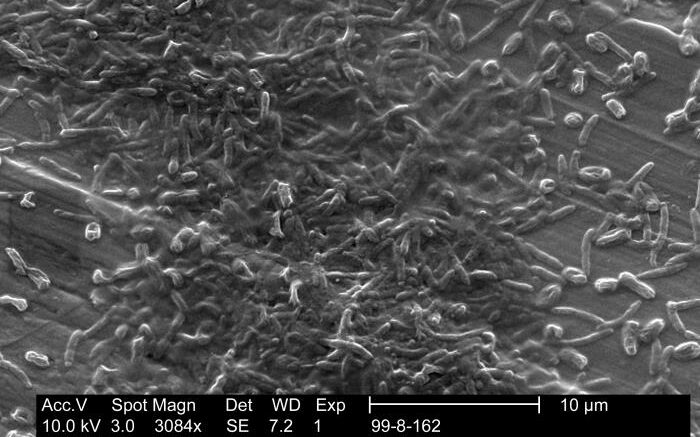Biofilms are ubiquitous in healthcare settings, say Maillard and Centeleghe (2023), who add, "By nature, biofilms are less susceptible to antimicrobials and are associated with healthcare-associated infections (HAI). Resistance of biofilm to antimicrobials is multifactorial with the presence of a matrix composed of extracellular polymeric substances and eDNA, being a major contributing factor. The usual multispecies composition of environmental biofilms can also impact on antimicrobial efficacy. In healthcare settings, two main types of biofilms are present: hydrated biofilms, for example, in drains and parts of some medical devices and equipment, and environmental dry biofilms (DSB) on surfaces and possibly in medical devices."
The researchers remind us that biofilms act as a reservoir for pathogens including multi-drug resistant organisms and their elimination requires different approaches. They note, "The control of hydrated (drain) biofilms should be informed by a reduction or elimination of microbial bioburden together with measuring biofilm regrowth time. The control of DSB should be measured by a combination of a reduction or elimination in microbial bioburden on surfaces together with a decrease in bacterial transfer post-intervention."
The authors add that, "Failure to control biofilms increases the risk for HAI, but biofilms are not solely responsible for disinfection failure or shortcoming. The limited number of standardized biofilm efficacy tests is a hindrance for end users and manufacturers, whilst in Europe there are no approved standard protocols. Education of stakeholders about biofilms and ad hoc efficacy tests, often academic in nature, is thus paramount, to achieve a better control of biofilms in healthcare settings."
Reference: Maillard J-Y and Centeleghe I. How biofilm changes our understanding of cleaning and disinfection. Antimicrobial Resistance & Infection Control. Vol. 12, article number 95 (2023).
